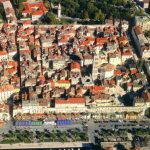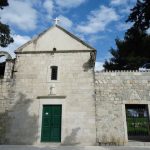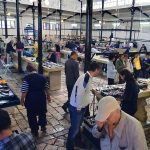The Synagogue
Tucked into the western walls of Diocletian’s Palace in the narrow street of Židovski Prolaz (Jewish Passage) you will find the third oldest continuously used Sephardic Synagogue in the world stemming from the 16th century. Sephardic Jews came from the Iberian Peninsula (Span and Portugal) as refugees. It was once a church however; it was rented and later bought by the Jews who converted it into their place of worship. It is housed on the second of two attached medieval houses and does not resemble a synagogue from the outside.
The Aron Hakodesh, an ark and inner sanctuary which is the most sacred place of worship as it faces Jerusalem, is constructed in the Classicist style using black and white marble. The Aron Hokadesh and the Torah are actually embedded within the Roman walls of Diocletian’s Palace. The Sinagogue has no resident rabbi however; this does not prevent this tight-knit community to meet for Sabbath.
You can visit the synagogue from Monday to Friday between 10am and 2pm but we suggest you call ahead on +385 (0)21 345 672 or email [email protected]
The Jewish Community of Split
In nearby Salona (Solin), Jewish artifacts have been excavated, proving that this community first lived in the area somewhere between the 3rd and 5th century however, it is believed that they first settled in the palace in the 7th century in what later became known as the Jewish Ghetto, or just “Get” today. Recent archeological digs also revealed several limestone carvings of menorahs in the eastern part of the basement, thought to have belonged to the first synagogue in Split which was destroyed when the palace burned in 1507. Another Jewish claim to fame is the northeast tower of the palace dubbed Židovska Kula (Jewish Tower) by locals as the Jewish community defended the city from the Ottoman invasion from this tower.
The Synagogue is located in the tight streets of the Jewish Ghetto, known as Get today and it was within this quarter of the palace that the Jews lived. Actually, the gates of the Jewish Ghetto were locked every night in order to prevent any religious outbreak between the Christians and Jewish communities. Actually, only one incident ever occurred when a fascist group robbed the synagogue of its silver and plundered the Jewish bookstore “Morpurgo” on Pjaca. The Morpurgo bookstore still exists today, bearing the same name and distict wooden green façade as it did in 1860.
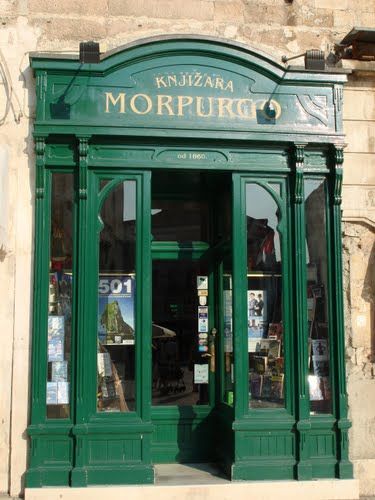
Image from panoramio.com
Pre-WWII there was a slim population of 300 Jews in Split however, 50% died between 1941 and 1943 and today, Split has a Jewish community of about 100 members.
The Jewish Cemetery
Permission was given to the Jewish community in 1573 to construct a cemetery on the eastern slopes of the Marjan hill, looking over the city. It is known to be one of the oldest Jewist cemeteries in Europe and there are more than 700 graves with readable tombstones in Sephardic double-curved Hebraic text from the 18th and 20th century. The gravestones are constructed according the Sephardim tradition where they lie horizontal instead of standing vertical.
The last burial took place in 1945 before is was closed as a monument. Today there is a Jewish section and a Holocaust memorial at the public Lovrinac cemetery west of town.
You can reach the cemetery within a 10-minute walk up the stairs to Marjan from the Varoš neighborhood just east of the palace. If the gates are locked, you can pop into the neighboring café, “Vidilica,” and the waiter will open it up for you.
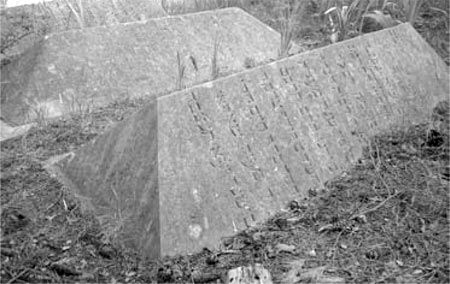
Image from zost.hr

